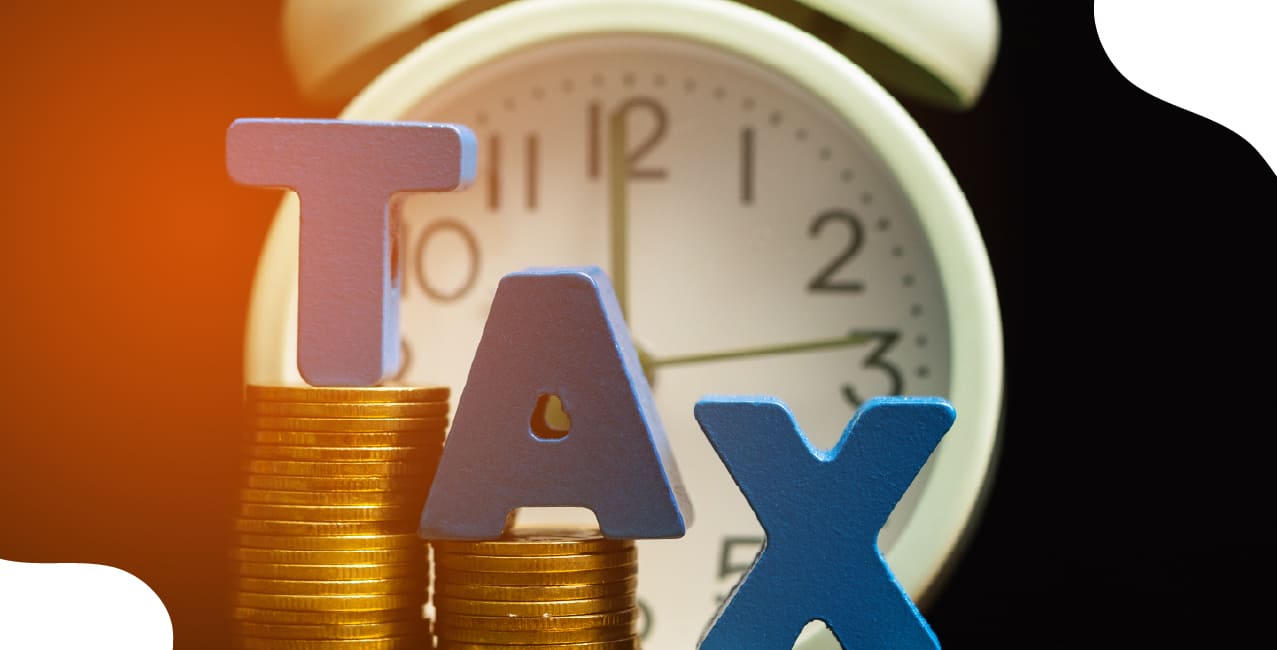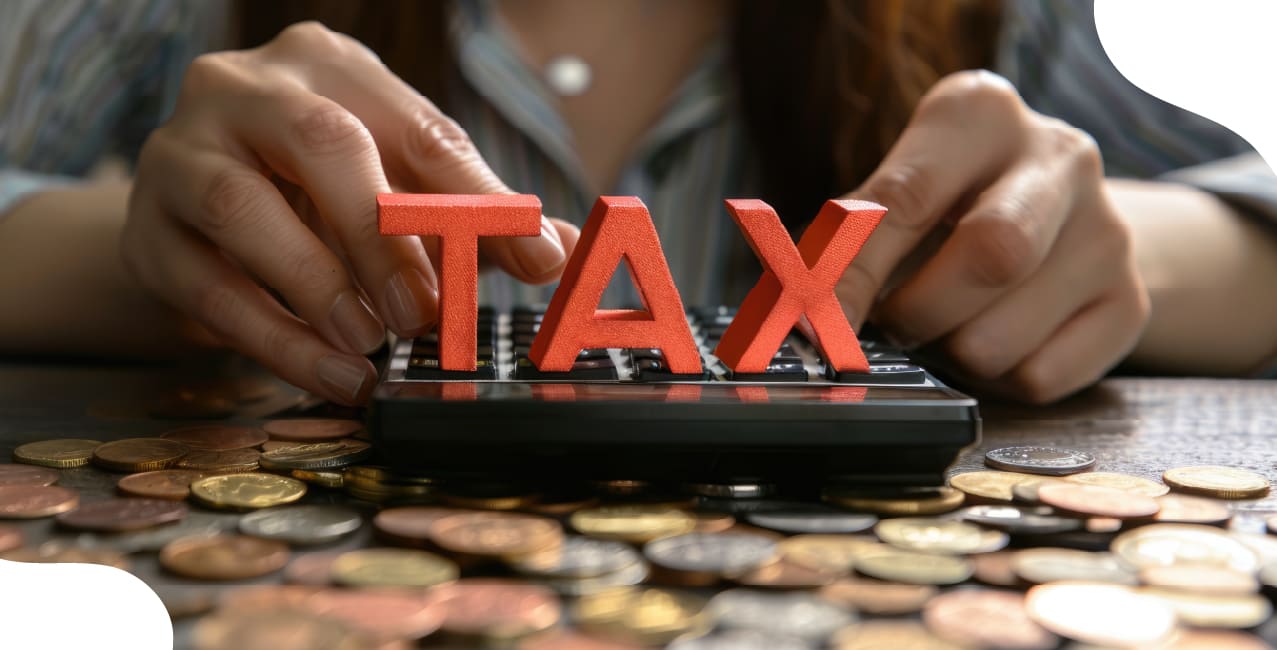
Author
LoansJagat Team
Read Time
6 Min
22 Sep 2025
Income Tax Slab for Female Taxpayers in FY 2025-26 – Updated Guide
Key Highlights
- There are no different slabs for female taxpayers as per the new regime. Basic exemption raised to ₹4,00,000 for FY 2025–26.
- Section 87A rebate increased for every gender and age group. People with taxable income ≤ ₹12,00,000 can get up to ₹60,000 rebate (that means ₹0 tax up to ₹12,00,000 income).
- Standard deduction, 80C/80D, and NPS limits remain unchanged. Super-senior (80+) ₹5,00,000 basic exemption under the old regime, but not in the new one.
In India, income tax rules are the same for men and women under the current tax system. However, all taxpayers can choose between the old tax regime and the new tax regime. Each regime has different tax rates and rules for exemptions.
For example, Mahira earns ₹10,00,000 in FY 2025-26. The table below shows the tax amount for her income.
Note: After applying Section 87A rebate, if taxable income is up to ₹12,00,000, net tax payable can be zero.
If Mahira follows the new regime, she can claim the ₹40,000 amount. The new regime has simplified the slabs and made taxation easier to understand. In this blog, we will discuss the new Income Tax Slab in FY 2025-2026.
Regular Female Taxpayers (Below 60 Years)
Women below 60 years are taxed under the new regime, as are males and other genders. The slabs differ between the old regime of FY 2024-25 and the new regime of FY 2025-26, as shown in the table given below:
The basic exemption limit increased from ₹3,00,000 to ₹4,00,000 in FY 2025-26. Additionally, the new regime offers a higher rebate. This means that incomes up to ₹12,00,000 are tax-free, compared to ₹7,00,000 earlier.
For example, Munni earns ₹10,00,000 annually. Let’s look at the income tax under both regimes.
In FY 2025-26, Munni will pay zero income tax (except for the 4% CESS), unlike FY 2024-25, when she paid ₹30,000.
Senior Citizen Women (60-79 Years)
Women senior citizens are taxed under the same slabs as younger taxpayers in the new regime. No additional exemption is available based on age.
Super Senior Citizen Women (80+ Years)
Women aged 80 and above are also covered under the new tax regime without age-based exemptions. The difference was seen in the old regime, where a higher exemption was available (₹5,00,000). But the new system keeps slabs identical for all ages.
For example, an 82-year-old, Fatima earns ₹9,50,000 annually. Let’s see the tax she pays in the old regime and the new regimes.
Under the old regime (2024-25), she paid ₹62,500 thanks to the ₹5,00,000 exemption, while under the new regime (2024-25), her liability was ₹70,000. Under the new regime (2025-26), she pays zero tax due to the higher rebate.
Policy Changes and Rebate Updates for Female Taxpayers
In Budget 2025, tax laws were the same across gender and age. Female taxpayers follow the same structure as men. Let’s discuss it in detail with the table given below.
Budget 2025 made no special tax slabs or deductions for women. However, the repeat under Section 87A (zero tax up to ₹12,00,000) was increased.
For example, a salaried woman earns ₹11,50,000 annually in FY 2024-25 vs FY 2025-26.
With all the policy changes, she does not have to pay a single penny as income tax other than the default 4% CESS.
Conclusion
Socially, people have treated a whole different race, but our government believes in equality, and that is why women pay the same taxes as men. There are no special exemptions or cashback for being a female taxpayer. Few changes were introduced under the regime 2025-2026, where people with income up to ₹12,00,000 do not have to pay taxes. This rule too is applicable to all!
FAQs
How does the rebate interact with surcharge and cess?
The rebate under Section 87A reduces only income tax. Cess at 4% still applies, and a surcharge applies if income is above ₹50,00,000.
Will state governments offer women-specific tax benefits?
No coordinated women-specific tax benefits have been announced. Any state incentives, such as reduced stamp duty, remain separate from central income tax slabs.
How should dual-income households plan TDS?
Each spouse must calculate TDS separately. The Section 87A rebate applies per individual, so both can pay zero tax if their income is within ₹12,00,000 after deductions.
Are there administrative changes for filing and calculators?
Yes. The e-filing portal and official calculators now reflect FY 2025–26 slabs and the ₹60,000 rebate. Some cases, such as short-term capital gains, may need manual adjustment.
Does the rebate change affect advance tax instalments?
Yes. The higher rebate lowers overall liability, which reduces advance tax dues. The instalment schedule of 15 per cent, 45 per cent, 75 per cent and 100 per cent remains the same.
Should women choose the old or the new regime?
The new regime is better for those with limited deductions as it offers a ₹60,000 rebate up to ₹12,00,000. The old regime may benefit women with large deductions under 80C, 80D, HRA or home loan interest.
Will the ₹5,00,000 exemption for super seniors return?
No. Budget 2025 did not restore the ₹5,00,000 exemption for women aged 80 and above, and no review or reintroduction has been announced.
Other Related Pages | |||
About the Author

LoansJagat Team
‘Simplify Finance for Everyone.’ This is the common goal of our team, as we try to explain any topic with relatable examples. From personal to business finance, managing EMIs to becoming debt-free, we do extensive research on each and every parameter, so you don’t have to. Scroll up and have a look at what 15+ years of experience in the BFSI sector looks like.

Quick Apply Loan
Subscribe Now
Related Blog Post

LoansJagat Team • 22 Sep 2025
_of_Income_Tax_Act.jpg)
LoansJagat Team • 22 Sep 2025

LoansJagat Team • 22 Sep 2025